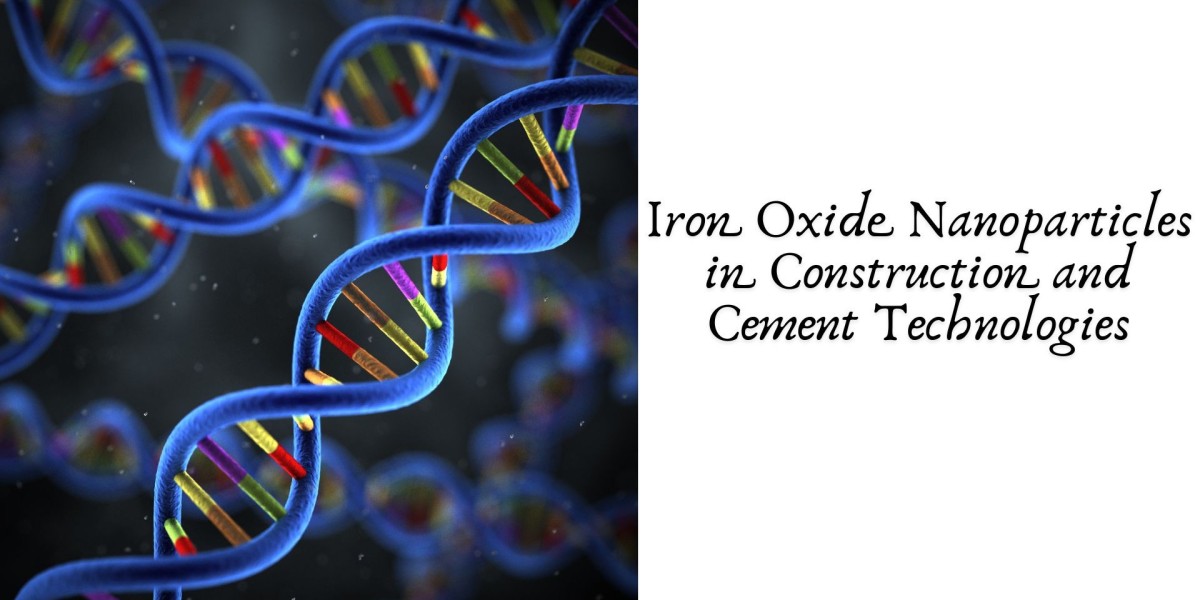Introduction
The construction industry, one of the largest and most resource-intensive sectors globally, is undergoing a transformation driven by advanced materials and nanotechnology. Among the many nanomaterials explored, iron oxide nanoparticles (IONPs) have emerged as versatile agents with the potential to improve both the functional and structural performance of cement-based materials. Their unique magnetic, mechanical, and chemical properties make them ideal for enhancing concrete, mortar, and various construction components. This article delves into the integration of IONPs in construction and cement technologies, exploring their benefits, mechanisms, applications, and future prospects.
Understanding Iron Oxide Nanoparticles
Iron oxide nanoparticles are typically composed of magnetite (Fe₃O₄) or hematite (α-Fe₂O₃) and are known for their nanoscale size (1–100 nm) and high surface area. These characteristics enable them to exhibit superior mechanical reinforcement capabilities, improved reactivity, and multifunctional properties. Their compatibility with cementitious matrices makes them especially valuable for modern construction demands.
How IONPs Improve Cement and Concrete
Enhanced Mechanical Strength
Iron oxide nanoparticles fill microvoids in the cement matrix, reducing porosity and enhancing the material's density. This pore-filling effect results in:
Increased compressive and flexural strength
Improved durability and resistance to environmental degradation
Accelerated Hydration Process
IONPs act as nucleation sites for calcium silicate hydrate (C-S-H), the main binding compound in cement hydration. This acceleration leads to:
Faster setting times
Higher early strength
Better performance in cold or time-sensitive environments
Improved Durability and Resistance
By reducing permeability, IONPs help mitigate:
Water ingress
Sulfate attack
Alkali-silica reactions
Carbonation and corrosion of embedded steel reinforcement
Self-Sensing and Smart Applications
IONPs exhibit magnetic and conductive properties, which can be used in:
Self-sensing concrete to monitor structural health
Electromagnetic shielding in buildings
Smart pavement and infrastructure applications
Practical Applications in Construction
Nano-Modified Cementitious Composites
Adding iron oxide nanoparticles to concrete mixes enhances overall performance in:
High-rise buildings
Bridges and highways
Marine structures
Decorative and Aesthetic Use
Iron oxide pigments are already widely used in colored concrete. Nano-IONPs further improve:
Color stability
UV resistance
Surface smoothness
Energy-Efficient and Green Buildings
With growing emphasis on sustainability, IONPs contribute to energy-efficient construction by:
Improving insulation
Reducing energy loss through reflective coatings
Enabling thinner yet stronger structures
Repair and Retrofitting Materials
Nano-modified mortars and grouts containing IONPs are ideal for:
Crack repair
Joint sealing
Restoration of historic structures
Challenges and Limitations
Despite the numerous advantages, several challenges hinder the widespread adoption of IONPs in construction:
Cost and Scalability: Synthesis and dispersion of nanoparticles at a commercial scale remain expensive.
Agglomeration Issues: Nanoparticles tend to clump together, reducing their effectiveness if not properly dispersed.
Long-Term Stability: The long-term performance and potential leaching of IONPs in concrete requires further research.
Regulatory and Environmental Concerns: The environmental impact of nanoparticle use in large volumes is still being assessed.
Future Prospects
The integration of iron oxide nanoparticles in construction is aligned with global trends toward smart, durable, and sustainable infrastructure. Future directions include:
3D printing with nano-cement for customized construction
Self-healing concrete using IONPs with magnetic activation
AI and IoT integration for real-time monitoring of nano-enhanced structures
Hybrid nanomaterials, where IONPs are combined with carbon nanotubes or graphene for synergistic effects
Conclusion
Iron oxide nanoparticles are redefining the landscape of construction and cement technologies. Their ability to enhance strength, durability, functionality, and sustainability offers a promising route toward next-generation building materials. While challenges in cost, scalability, and safety remain, ongoing research and development are paving the way for broader adoption. As urbanization continues and the demand for resilient infrastructure grows, IONPs stand out as a key enabler of innovation in the built environment.






